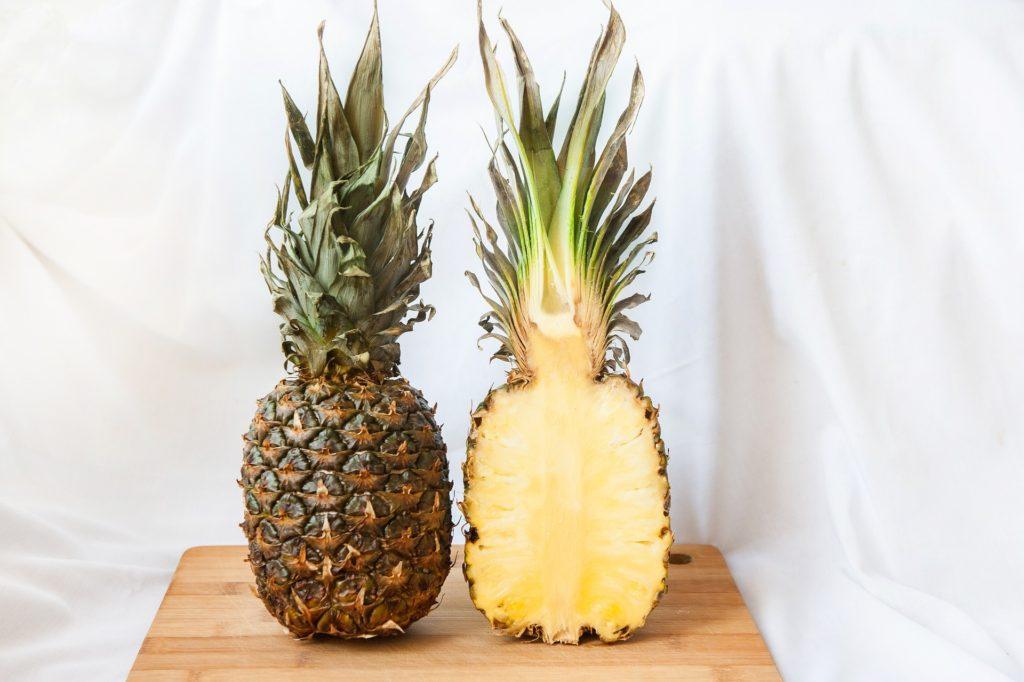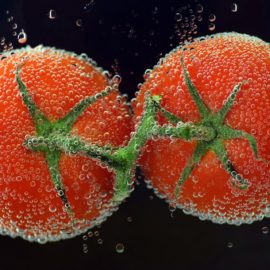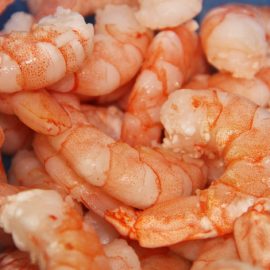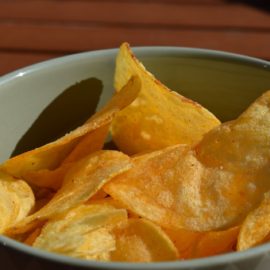
Are you headed to buy some pineapples at the market? The best time to buy pineapples is anywhere between March through July. Between these times, you can find pineapples at their peak quality — sweetest and juiciest. But luckily, pineapples are readily available all year round. If you suddenly crave for some pineapple, and do not have an idea how to pick one, there are several signs to look for. Here they are.
THE DISTINCT SWEET PINEAPPLE SMELL
Some fruits when ripe do not give off a smell without cutting them open. But pineapples are different. They are an aromatic tropical fruit. This means they are able to give off that distinct sweet pineapple aroma without the need to slice them. The aroma is stronger when you put your nose closer to the base of the fruit or stem end. If you do not smell the sweet odor, the pineapple is most probably not ripe yet The reason why ripe pineapples can give off a smell because of volatile aromatic compounds.
The volatile aromatic compounds that provide the distinctive sweet aroma of pineapple vary, different on several factors. These include the pineapple variety, storage condition, area it was grown, and more particularly the stage of ripening. Extensive researches have found that pineapple contain at least 280 volatile compounds. These compounds include acids, lactones, hydrocarbons, esters, sulfur-containing compounds and carbonyl compounds.
You might also like: Why Does Pineapple Hurt My Tongue?
One study found that the esters Ethyl hexanoate and methyl hexanoate are the most concentrated in pineapples. These two have a fruity smell, and they have found use as a flavoring agent in food. In fact, Ethyl hexanoate is used to impart apple-like flavor in beers. Methyl hoxanoate is also produced industrially to produce pineapple odor in perfumes.
THE BRIGHT YELLOW PINEAPPLE SKIN
Most young fruits are green, and turn yellow as they mature. Pineapples are no different. Most pineapples in the supermarket are bright yellow with a hint of green. This color indicates that the pineapple is at its peak ripeness. Pineapples start to turn bright yellow from the base. The further the color change has progressed towards the crown, the more ripe the pineapple.
Avoid pineapple that is dark yellow or orange with some brown spots. This indicates that this is already overripe. Brown leaves are also an indication. While overripe pineapples are edible, they are not enjoyable to eat. Overripe pineapples contain high amount of fructose, which some individuals have a hard time digesting.
Some green parts of the skin is fine. But stay away from pineapple that is totally green as this is often underripe.
An unripe pineapple is not sweet or juicy. And there is no way artificial way to ripen it since pineapple is an example of non-climacteric fruit. Non-climacteric fruits are harvested only when ripe because their ripening process stops once harvested or removed from the mother plant.
You might also like: Ethylene And Ripening In Fruits And Vegetables
There are some pineapples that are still green, but are actually ripe already. This is why it is important to look for other indications.
You would also want to visually check the appearance of the leaves as they indicate freshness.
HEAVIER THAN IT LOOKS
After checking the color of the fruit, the next thing that we instantly do is feel it with our bare hand. Does it feel heavier than it looks? They say a fruit that is heavy for its size is already ripe. It is true for most fruits, even for pineapples. A pineapple that looks heavier is sweet, juicy, and more enjoyable. The next time you visit a fruit stand or supermarket for a pineapple, try to pick two, and feel the weight with your hand. Choose the one that is heavier.
It is worthy noting that assessing the ripeness of pineapple using this method alone is not a sure thing. Remember that pineapples come in varieties, shapes, and sizes.
FIRM BUT SQUEEZABLE
This is perhaps that most reliable way of telling the ripeness of a pineapple—the squeeze test. The reason why most consumers do this when they pick a pineapple.
You might also like: Are There Fruits That Continue To Ripen After Harvest?
An unripe pineapple when touched is hard, and you cannot squeeze it at all. Once a pineapple is ripe, it is firm but slightly soft that you can squeeze it.
Just watch for pineapples that are too soft. They may either be overripe or starting to rot. When you press them with a bit of pressure, your finger leaves a little indent. Over ripe pineapples also smell like vinegar or alcohol. This happens because the sugars have started to undergo fermentation.
EASY TO REMOVE LEAVES
The spiky green leaves of a pineapple called fronds are also a good indication to check for ripeness. One pineapple usually has 30 leaves. These green leaves will be deeply attached in an unripe pineapple and challenging to pull without exerting a lot of force.
But this is not the case for a ripe pineapple. The fronds of a ripe pineapple should easily come off when pulled.


